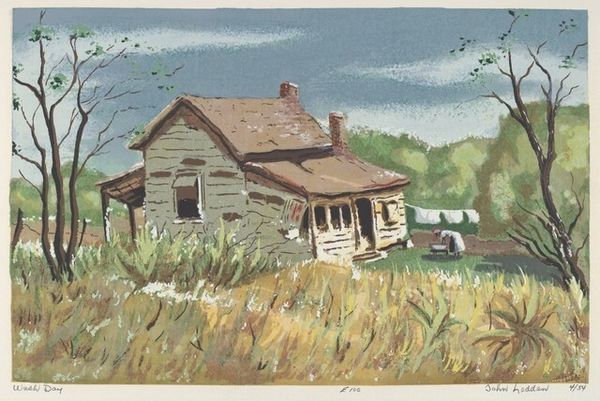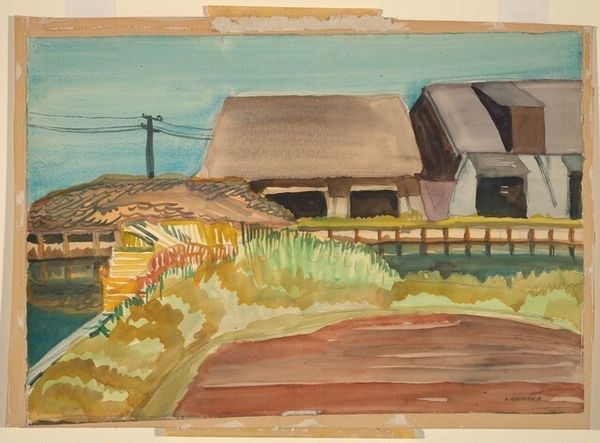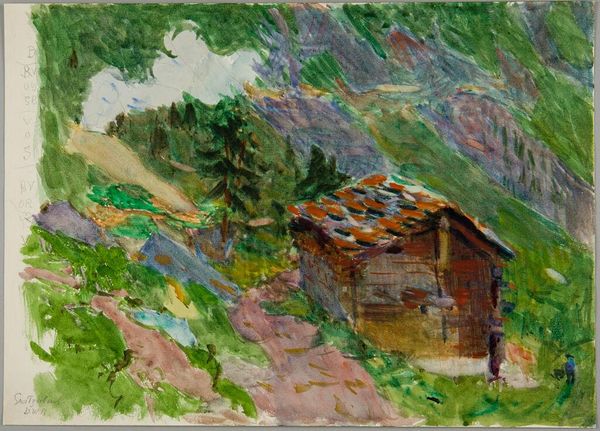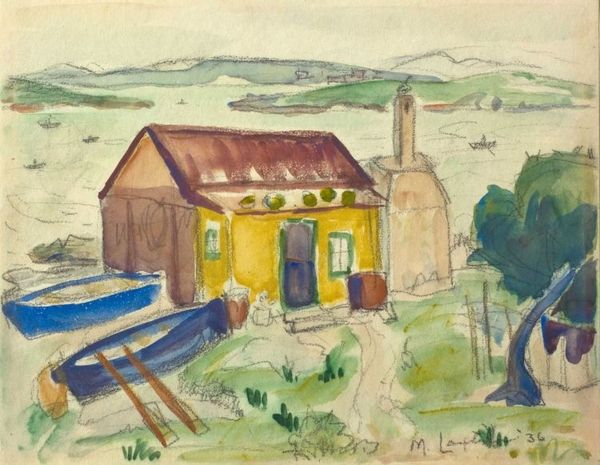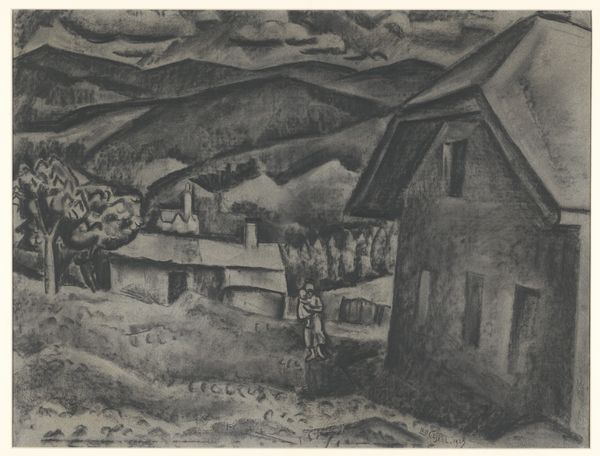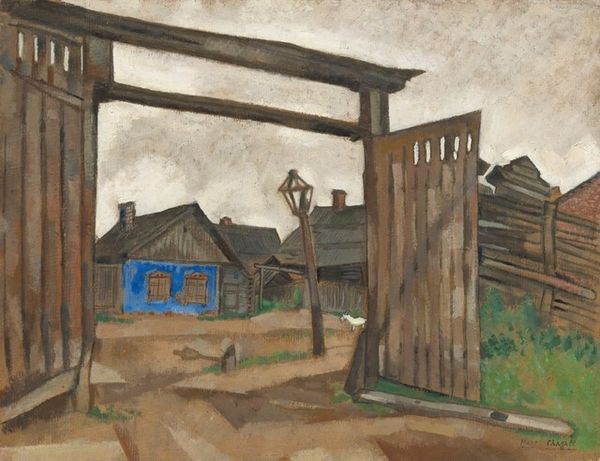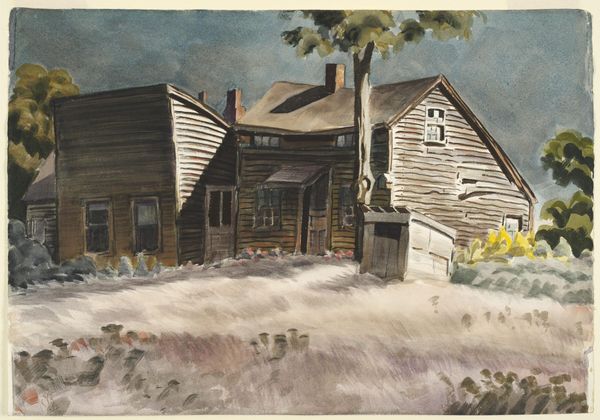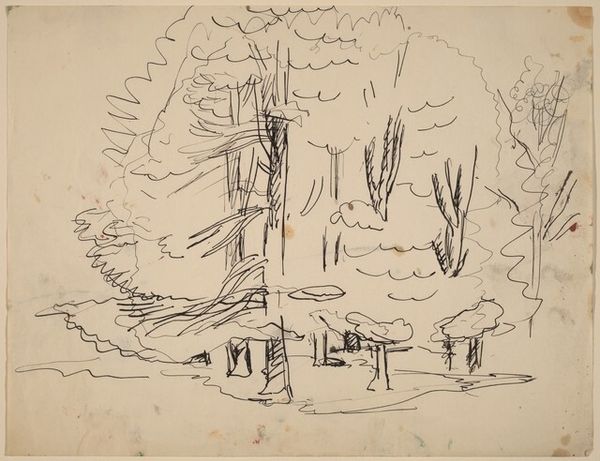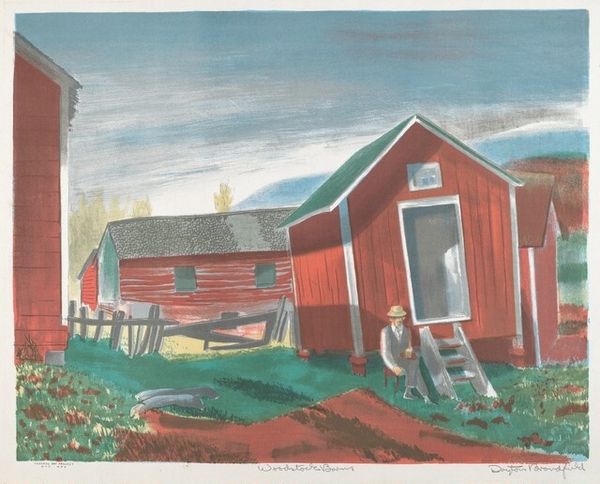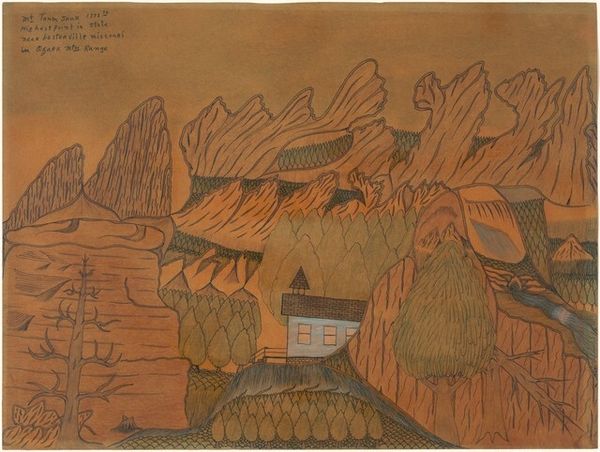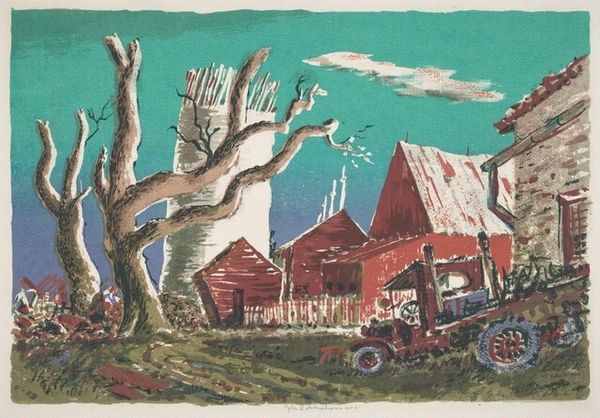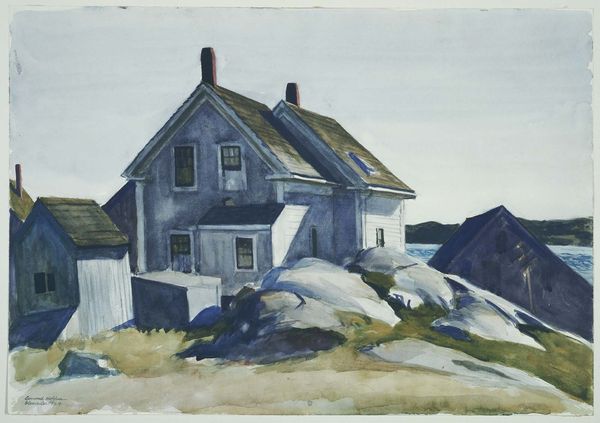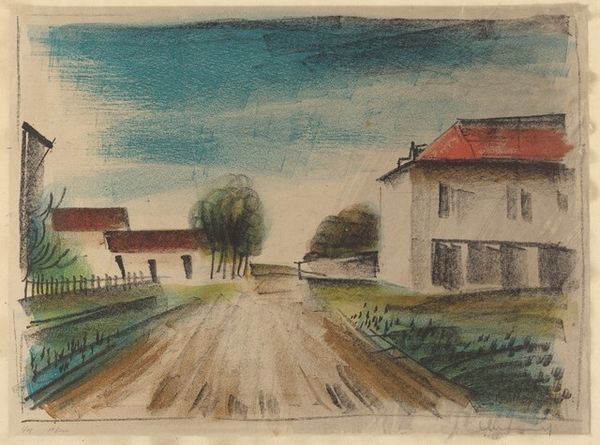
drawing, plein-air, watercolor
#
drawing
#
water colours
#
plein-air
#
landscape
#
watercolor
#
coloured pencil
#
cityscape
#
genre-painting
#
watercolor
Dimensions: 14 1/2 x 20 1/2 in. (36.83 x 52.07 cm) (sight)
Copyright: No Copyright - United States
Curator: Let’s take a closer look at Caleb Winholtz's "Barber Shop," likely created around 1942. You can find this piece over in Gallery 321 at the Minneapolis Institute of Art. Editor: Oh, immediately I get this sense of a small-town idyll. A red building practically glowing amidst those hazy greens and browns… it feels like a memory. Curator: That red pops, doesn't it? Winholtz clearly had a fondness for vibrant colors and textures. Note his use of watercolors, perhaps even some colored pencil, deployed en plein air to capture this landscape and genre scene. He was after something immediate, capturing a transient moment. Editor: Watercolor allows for that. It's interesting how the material itself almost echoes the fleeting nature of small-town life. What's the context surrounding Winholtz’s practice and engagement with materials here? It’s more than just representational. Curator: Absolutely, and if we think about 1942... America’s about to be in deep. These little Main Streets—their social importance. A barbershop, even a slightly dilapidated one—becomes a site of connection, small-town labor, localism. It reminds people of home. Editor: There’s a hint of almost documentary work happening here, a study. What's intriguing is the contrast; we see an establishment embedded into a natural setting. Curator: The piece is almost unfinished, a draft of a scene, in ways which gives it the special vibrancy it possesses.. It almost feels like an artist is still composing in-scene. Editor: So what looks at first glance like gentle scenery, or a scene painting is really about the production and use of labor and materials. Curator: In that sense it transcends mere nostalgia, becomes something of an ethnographic record almost, capturing an essential slice of Americana during a moment of transition. Editor: Well, I see both now. At first glance it's sentimental. Knowing how its situated historically allows its message to resonate that much more strongly. Curator: Indeed, art holds many layers within itself, the deeper you search the more meaning that’s waiting to be unearthed.
Comments
No comments
Be the first to comment and join the conversation on the ultimate creative platform.
